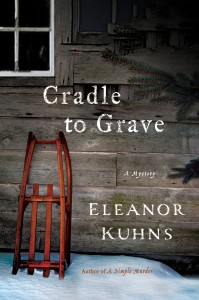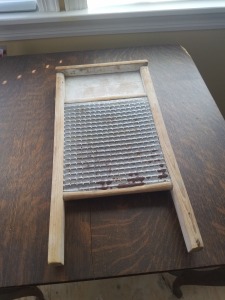No doubt there were many causes of the hysteria. The summer was cool and wet, prime growing conditions for a fungus called ergot on the rye. It releases a toxin similar to LSD. So it is possible that people were suffering hallucinations and genuinely thought they saw the devil and women flying around. If so, the climate that summer had a tremendous effect on history.
Another contributing factor: Tituba, a slave owned by Samuel Parrish. Variously described as an Indian or a black slave, she told Samuel Parrish’s daughter and a group of girls stories which drove much of the content of the visions. Her testimony and was a direct cause of the eventual hangings of women described as her confederates. (Ironically, Tituba was set free.) A shadowy character, she has been also described as practicing voodoo. Her testimony. at least to me, reads more like the Christian belief in demons and the devil.
Then there are the girls themselves. To modern eyes, the easy belief in the veracity of a group of girls is incredible. Samuel Parrish believed in the truth of the accusations until the end of his life. I suspect there is another explanation. Women, and young girls especially, at this time were supposed to be quiet, meek and submissive. The claims made by these girls and the charges against others in the village put them on center stage. I do not wonder that they kept ratcheting up their stories; anything to keep that attention.
The hysteria ended in 1693. After 1700 reparations began to be paid to the surviving victims and families of the executed. But belief in witches and the trials did not end. In the new United States a trial and a judicial solution to perceived witch craft became unlikely (and I imagine that the uncritical acceptance of spectral evidence by Samuel Parris in Salem had a lot to do with increasing skepticism) but accusation and hanging by mobs could still happen.
In Europe women were still attacked and in some cases executed for witchcraft: in Denmark – (1800), in Poland( 1836) and even in Britain (1863). Violence continued in France through the 1830’s. Accusations continued in the United States as well. In the 1830s a prosecution was begun against a man (yes) in Tennessee.
Even as recently as 1997 two Russian farmers killed a woman and injured members of her family for the use of folk magic against them.
There were two incidents of note in New York State. In 1783, Ann Lee, the spiritual heart of the new faith now commonly known as the Shakers, was arrested and charged for blasphemy One hundred years earlier she might have been hanged as a witch or devil worshipper. But she was released. Persecution of the Shakers continued however. And Lydia, my primary female character who is a former Shaker, would have been a target.
The final trial for witchcraft took place in 1816 in Nyack. Jane Kannif, the widow of a Scotch physician, lived in a small house on Germonds Road in West Nyack. An herbalist and widow of an apothecary, she treated neighbors that came to her with herbs and methods she learned from her late husband. But she was eccentric. According to the people at that time she dressed oddly, was unsociable and wandered around talking to herself. She was regarded as insane or worse yet a witch. It was decided to take her to Auert Polhemus’s grist mill and using his great flour scales weigh her against the old Holland Dutch family Bible, iron bound, with wooden covers and iron chain to carry it by. If outweighed by the Bible, she must be a witch and must suffer accordingly. She was taken to the mill, put on the scales, and weighed. Since she weighed more than the Bible, the committee released her.
So what happened in Salem? It seems as though the town lost its collective mind.
Despite the attention paid to the accusations and the trials and hangings, for me the real focus lies with the rest of the village, those who saw family and friends turn on them. Think what it must have been like living there at this time. Salem was a small community. Those accused were friends, family and neighbors of their accusers. How could you forgive the ones who hanged one of your family members as a witch and terrorized the others? Especially since the accounts make is clear that some of the charges sprang from the worst of human nature: greed, revenge and malice. What kind of amends would be enough? Would financial reparations ease the grief? I know this is something I could never forgive. And I would guess that, despite the end of the witch hunts, this village remained troubled for years. In fact, many of those whose family members had been accused or hanged moved away to a new village called Salem’s End. After those experiences, how could anyone ever trust again?
Although PTSD is not a term they used, I am certain those who survived their experiences in Danvers suffered from it the rest of their lives. People on both sides: the accused and the accusers, changed their names. One of the hanging judges was a Hathorne; Nathaniel Hawthorne added the w. And the Nurse family, right in the thick of the storm, moved away and became Nourses.
That brings me full circle, back to The Devil’s Cold Dish. Rees has a history with several people in his hometown and Lydia, a former Shaker, would surely be suspect. What if -?



